5 ways to step up your hiking game, from altitude prep to pack training

- Share via
Do you condition for longer hikes? There are different schools of thought about the practice. Some folks say the best training for hiking is simply hiking; others believe that weight training and cardio can give you a leg up (no pun intended) for your longer, steeper hikes.
It’s funny, though — among endurance sports, hiking seems to be the only one for which some of its advanced practitioners do no external conditioning. Competitive bicyclists, runners, rowers, swimmers, boxers and triathletes all lift weights and do cardio, so why should hiking be any different? Could it be because we think of hiking as more of a lifestyle than a sport?
Get The Wild newsletter.
The essential weekly guide to enjoying the outdoors in Southern California. Insider tips on the best of our beaches, trails, parks, deserts, forests and mountains.
You may occasionally receive promotional content from the Los Angeles Times.
I’ll be real with you, albeit sheepishly: I rarely condition for climbing. The exercises that are supposed to make us better climbers (campus board or gymnastic rings, anyone?) are more masochistic than fun to me, though I know my laziness is stopping me from climbing higher grades.
But, as a beginner older hiker (OK, I’m not 50 yet, but I want to hike for longevity, so I’m reading up), in order for me to break into what I would consider my intermediate level of hiking (approximately 7 to 15 miles a trek, or going faster on my 3- to 5-mile hikes), I appreciate the “shortcut” of conditioning — mainly because I don’t have the time to get out to the trails every day. If you’re not hiking frequently, you might benefit from doing exercises at home or at the gym.
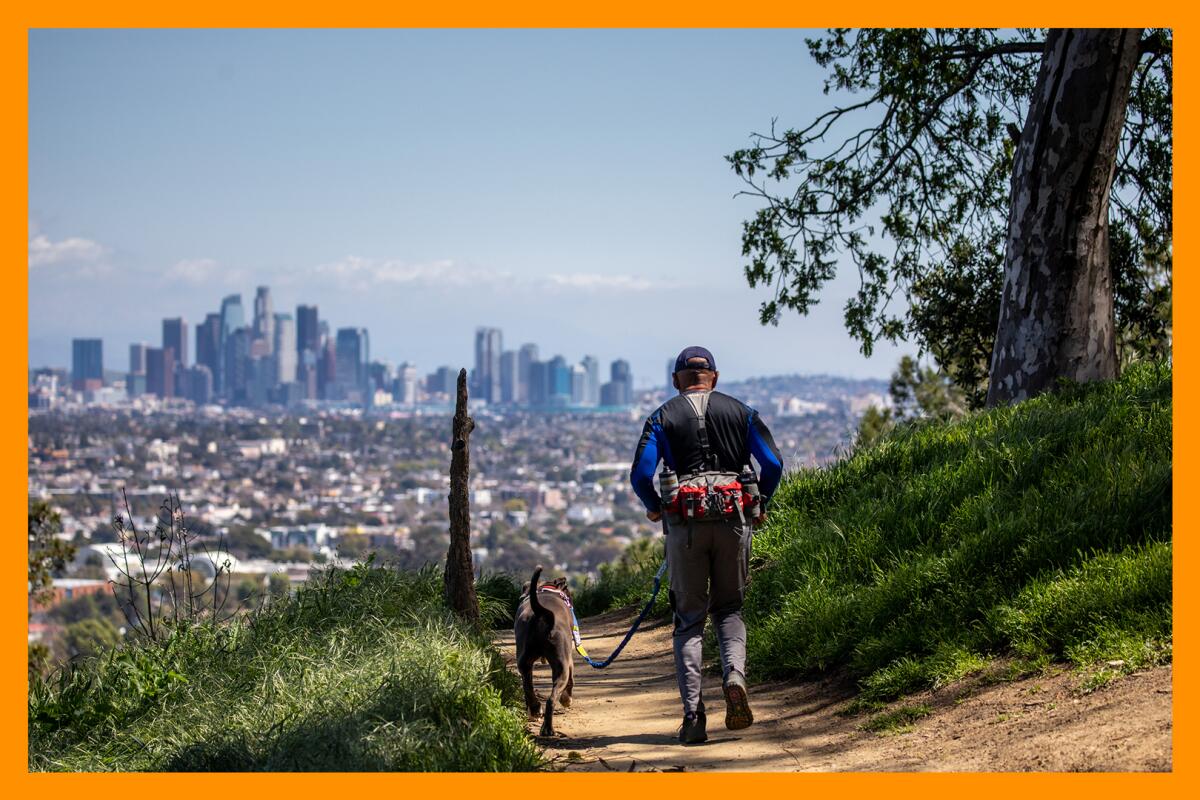
1. Get whatever cardio you can. Sometimes I get bummed that I can’t hit the trails, but I’ve started to see the potential of neighborhood walks, jogs and bike rides as conditioning for desired hikes. Even a quick high-intensity interval training (HIIT) run, 20-minute jog or 30-minute walk or bike up a hill can be helpful if you do it regularly, building up to lengthier stints. The American Heart Assn. recommends 150 minutes of moderate cardio a week, or 75 minutes of vigorous cardio, but you can “derive more health benefits” by doubling that to 300 minutes of cardio a week. If you’re already hiking regularly, try increasing your cardio from 20 to 30 minutes to 45 to 90 minutes, or switching your routine to higher-intensity cardio.
2. Do weight-bearing exercises. Of course, you’ll want to condition your hiking powerhouse (your legs) with squats (jump squats are great) and lunges, but don’t forget about your core and back. Side planks are great for strengthening your core, which will help protect your lower back. If you need more of a challenge, add a dumbbell to your routine.

3. Carve out time for yoga and stretching. Stretch that aching back after you hike, and then do each of these stretches for 30 seconds: hamstrings (I stand and fold forward over my legs); quadriceps (I stand and bend my knee, folding my leg behind me with my toe pointing upward); hips (pigeon pose is nice); and calves (here are a few classic calf stretches). If you have time, restorative yoga can be a helpful complement to your hiking conditioning. I take yin yoga at Touchstone Climbing, but if you prefer to practice online, try the Recharge + Unwind category at Modo Yoga L.A.
4. Prep for higher altitudes. You can prep for 10,000-feet-plus hikes by increasing your VO2 max, which is, quite simply, the amount of oxygen you breathe in liters per minute. Increase the maximum amount of oxygen you can use when you’re tackling that lofty peak ascent by doing strenuous exercises on your own, like hill repeats and battle ropes.
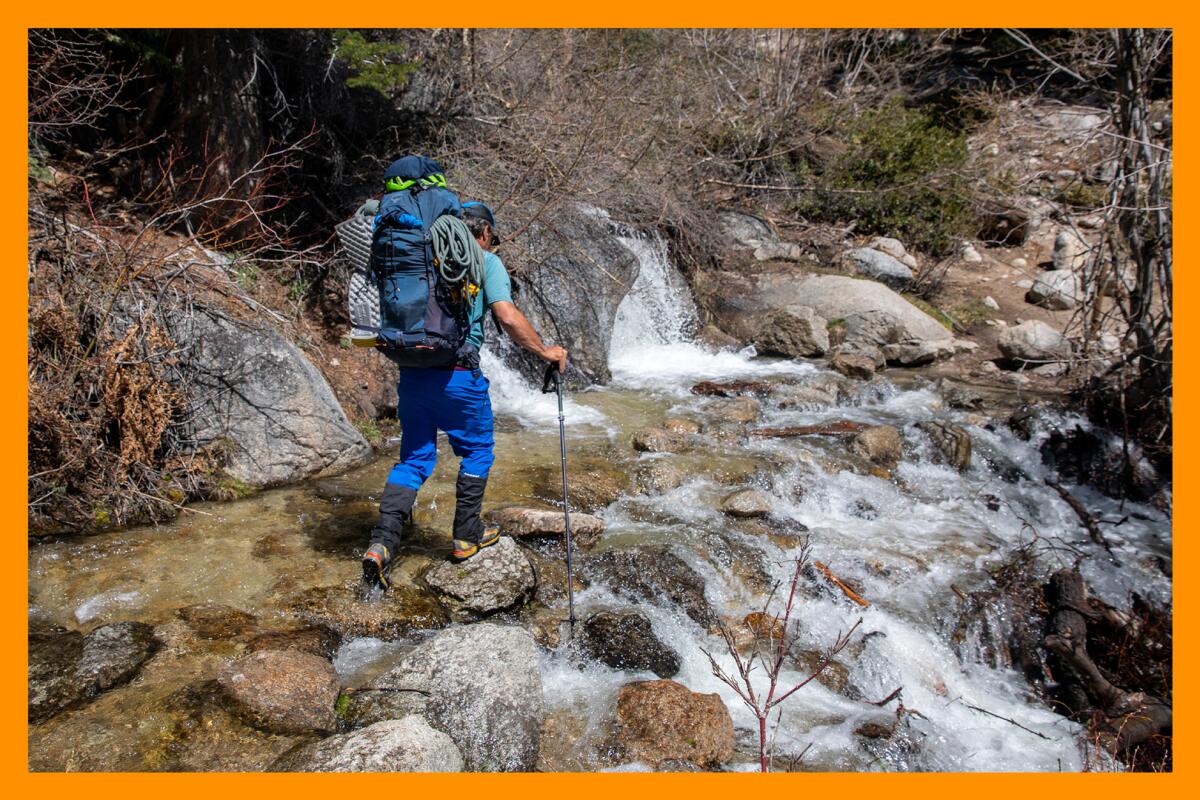
5. Carry a heavy pack. If you’re going to thru-hike, you have to be ready to handle a weighted pack, even if you’re an ultralight hiker. The best way to get ready for the experience of basically having a turtle shell on your back all day is to practice. Most people agree that it’s beneficial to go slow and add gradually to the weight of your pack. Some folks start at 25% of the weight of their total pack. Others start with 5% of their total body weight and increase the pack weight by 5% every four weeks. Summit Strength, an online strength training school for hikers, recommends weighting your pack with evenly-distributed items, like water bottles, rice or dog food, and offers advice on interval training with a backpack that’s heavier than the one you’ll actually haul when thru-hiking.
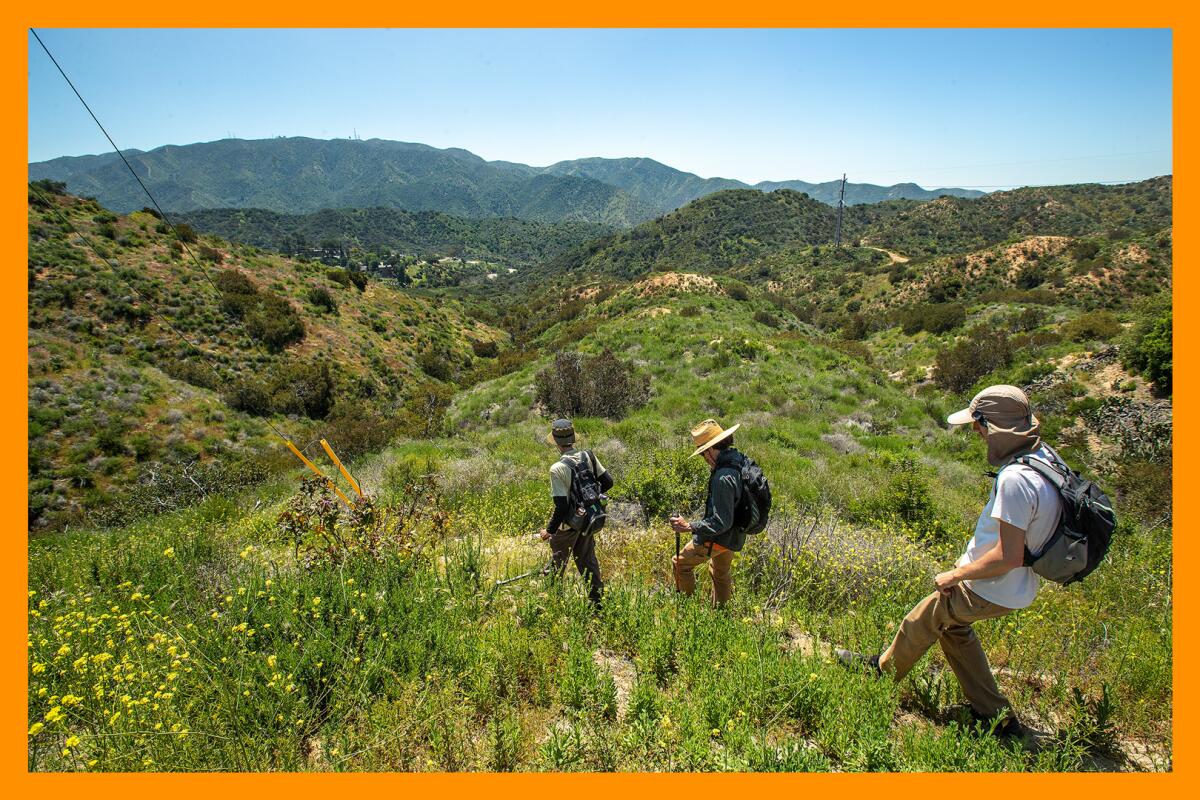
I’ve only been doing the first three items on this list, and only for a few weeks, but on a recent haul up the first few miles of Mt. Wilson Trail, I did feel I was zooming up faster than usual. In a few weeks, let’s check in and see where we all are, Conditioning Club. The load is lighter when we do it together, right?
3 things to do

1. Show your Pride with a family-friendly run. Join volunteer-run LGBT running club Los Angeles Frontrunners on June 25 for its 40th annual Pride Run in Griffith Park. The flat, dirt trail race loops once around the golf course for the 5K and twice for the 10K. It all kicks off from the Crystal Springs Picnic Area of Griffith Park, whether you’re doing the 10K at 7:30 a.m., the kids’ race at 8:45 a.m. or the 5K at 9 a.m. (There’s also an option to do “Ultra Pride,” or both the 5K and the 10K.) Race entry costs between $35 to $40, except for the kids’ race, which is free. A partial contribution from runners’ fees goes to local charities. This year’s beneficiaries are Friends of Griffith Park and ProjectQ Community Center, a nonprofit supporting LGBTQIA+ people with housing insecurities with therapy, mentorship and workshops. Sign up here.
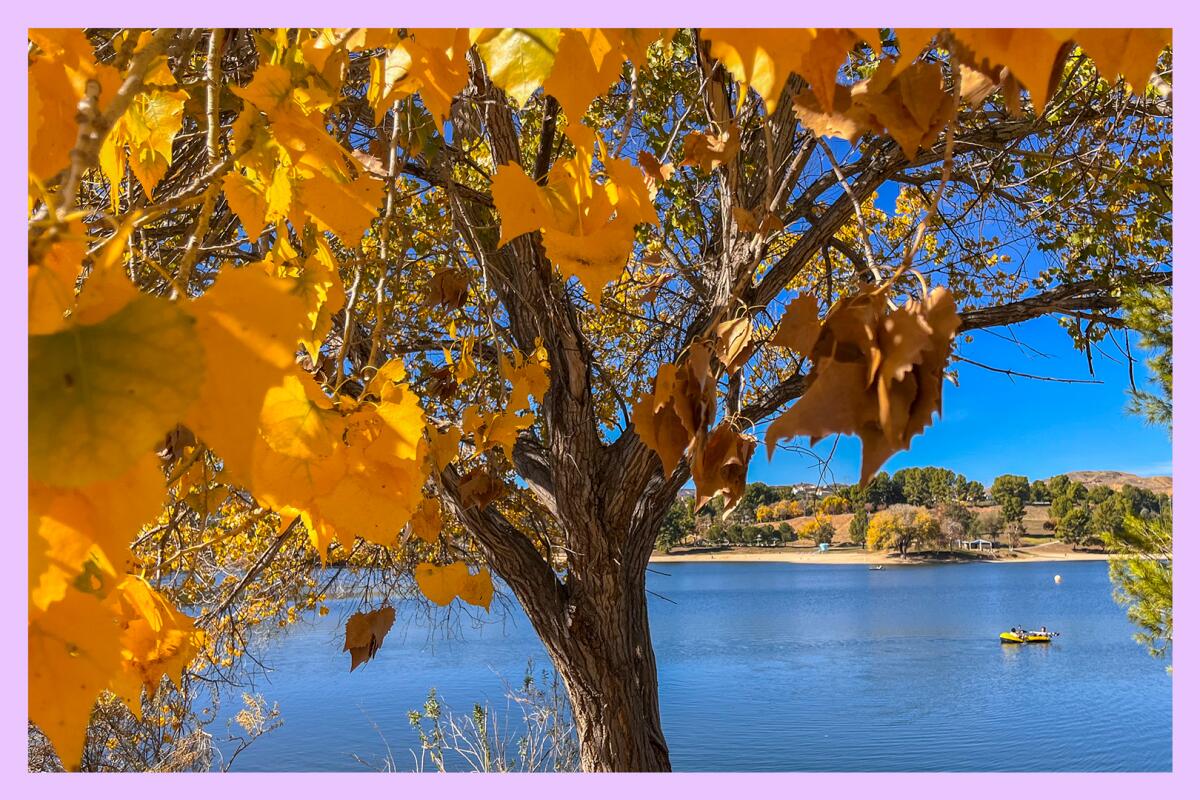
2. Try out camping, locally. If you have a finicky kid or someone in your crew who’s just not sure about heading to a far-flung spot to camp, try it out in your own backyard — or, rather, our local parks. L.A. County Parks’ Overnight Camping program is back from June to August, with a variety of dates available for camping at Castaic State Recreation Area, Frank G. Bonelli Regional Park, Kenneth Hahn State Recreation Park, Santa Fe Dam and Whittier Narrows. Fishing, campfire games and storytelling will be part of your experience, naturally. The camping program costs $10 per person. Find out more about the camping options here; you’ll need to register beforehand.

3. Know the score. If you’ve ever seen a film with live music (like John Williams’ annual Hollywood Bowl show conducting the Los Angeles Philharmonic playing his scores, while snippets from his classic films play), it’s an unearthly, intense aural experience. On July 8 at the Barnsdall Gallery Theatre, the L.A. Live Score Film Festival gives you a variety of films to enjoy when set to an in-person score. Film-music collabs are forged especially for the event, created by the Film Music Connect program and the Los Angeles Film School. Composers are matched with winning filmmakers to write original scores for the festival, which are performed by Helix Collective. The event includes a panel with the filmmakers and composers, hosted by Kimberley Browning and Brian Lauritzen. Plus, there’s a fun interactive component: the audience votes for best picture and best musical score. Tickets are $23. Save your seat here.
The must-read
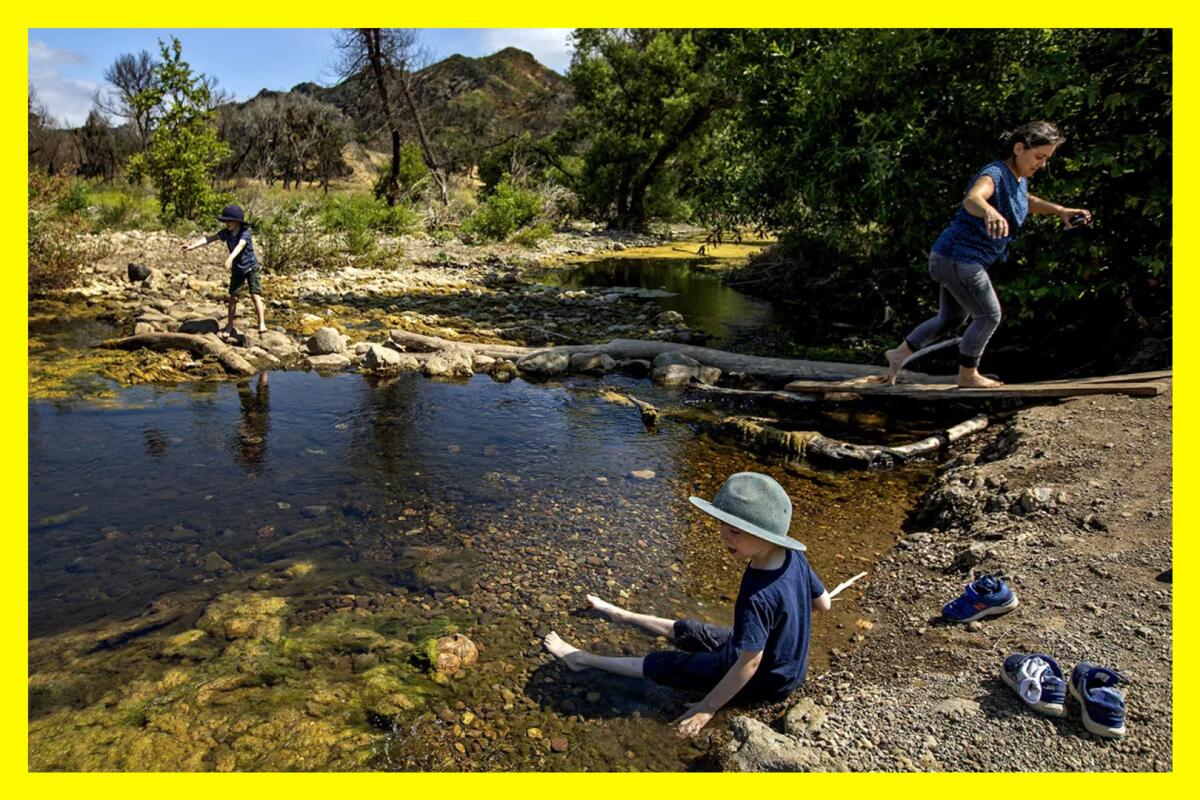
I’ve definitely had my fair share of d’oh packing moments, like when I forgot to bring my hiking boots to cold, wet Iceland and decided to hike to glaciers and across stormy beaches, to mount horses and board whale-watching schooners for two weeks in … wet wool socks and Puma sneakers.
Adam Roy for “Outside” has helpful advice on getting through your very own Homer Simpson moments, when you leave behind your most useful pieces of gear, from tent poles to sleeping pads. This is a quick and easy read that will give you useful ideas, from using cord to string up a tent to reconstituting oats and other food in the absence of a camp stove or cooking gear. Sometimes, of course, you should abandon ship entirely when you find yourself camping without an item. Roy tells you when.
Happy adventuring,

P.S.

You might love sleeping in a tent, but could you defend it like an army base? That’s the goal in “Siren: Survive the Island,” a Korean reality series streaming on Netflix that pits six hardy groups of women against one another in a battle to occupy a remote island and its habitations, from a fortified treehouse to a mere tent. Steal any habitation’s flag, and you’re its new owner. The first team to own all bases wins.
For the last couple weeks, I’ve binged this strategic war of women heroes. From Herculean Physical: 100-style feats to tactical base battles, the competitors — who are firefighters, police officers, army soldiers, bodyguards, athletes and stuntwomen — have struggled valiantly against one another.
The series doesn’t allow for any “Hunger Games”–style brute force, relying instead on pulling personal flags (representative of players’ “lives,” so once a flag is plucked, that player is out for the rest of the day’s battle). But that mattered little to me; it was really the strategy that I found fascinating. Some teams consistently chose to attack, while others found the best offense was a strong defense. One team dug trenches to trip their attackers, while another tied up their flag in defensive wraps. Alliances were formed. Teams regularly eavesdropped, scouted and surveilled one another. They also worked in survival conditions, lacking the privilege of a camp stove or protein-packed food until they won those prizes.
Pushing our limits is part of what we do as outdoors enthusiasts, but unless you’re in an army, you probably won’t find yourself regularly engaging in tactical battles or even simulations. If you find ancient and pre-WWII military history as compelling as I do and enjoy reading about everything from naval battles to war espionage, you’ll probably have fun wondering what you would do in this fairly primitive setting and whether you’d come out on top, like … oh, never mind. No spoilers here. See if you can pick the winning team, an impressive combo of strength and smarts, early on.
For more insider tips on Southern California’s beaches, trails and parks, check out past editions of The Wild. And to view this newsletter in your browser, click here.
Sign up for The Wild
We’ll help you find the best places to hike, bike and run, as well as the perfect silent spots for meditation and yoga.
You may occasionally receive promotional content from the Los Angeles Times.




